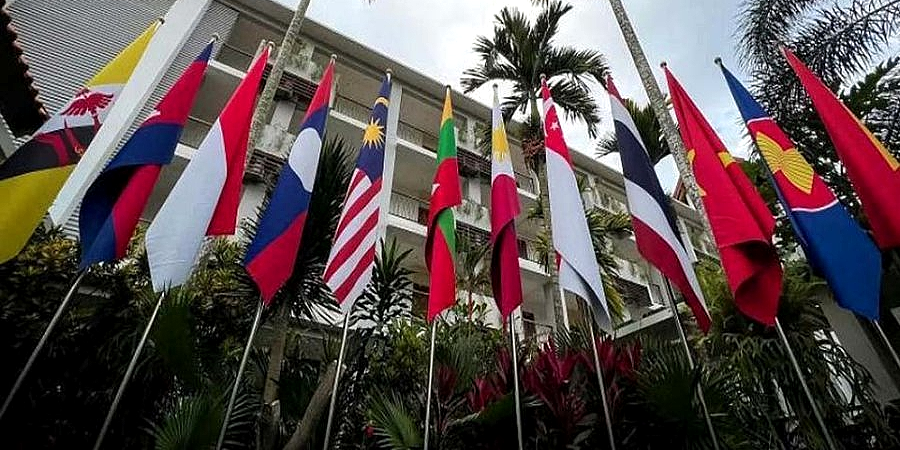
The recently concluded 44th and 45th ASEAN Summits showcased ASEAN’s strong commitment to collaboration and strategic action amidst global challenges.
Under Lao PDR’s chairmanship, with the theme “ASEAN: Enhancing Connectivity and Resilience,” leaders from the 10 ASEAN member states gathered to confront pressing regional issues, shaping a collective vision for a more united, prosperous, and sustainable Southeast Asia.
ASEAN likewise had summits with its partners.
These summits are a testament to the importance of dialogue and diplomacy, and are an integral part of ASEAN’s journey toward deeper integration, enabling a unified regional response to global shifts.
High on agenda of the summits was the progress made on the work in crafting the ASEAN Community Vision 2045 and its strategic plans, which will guide the region for years to come.
As ASEAN approaches the completion of the Community Vision 2025, it has commenced charting its future direction for the next two decades, emphasising resilience, connectivity, inclusivity, and sustainability in response to emerging geopolitical and geo-economic challenges and strategic opportunities.
It is in this context that the ASEAN Leaders’ Declaration on the Development of Strategic Plans to Implement the ASEAN Community Vision 2045 was adopted.
ASEAN centrality stood at the heart of the summits’ outcomes.
Through the ASEAN Leaders’ Declaration on the ASEAN Outlook on the Indo-Pacific for the Future Ready ASEAN and ASEAN-Centred Regional Architecture, leaders reaffirmed ASEAN’s role as the driving force in shaping the regional architecture.
They stressed the need for unity in navigating shifting geopolitical and economic landscapes.
In engagements with ASEAN’s partners, leaders underscored the importance of multilateralism, international law, and advocated for dialogue, diplomacy and strategic trust to address global challenges, including developments in the South China Sea, the Korean Peninsula, Ukraine, and the Middle East, advocating for peaceful resolution.
On Myanmar, they deeply explored how best to move forward along a Myanmar-owned and Myanmar-led process in dealing with the situation, emphasising that Myanmar remains a member of the ASEAN family.
Myanmar’s sending of a non-political representative to the summit is seen as an indication of Myanmar complying with the Five Point Consensus, ASEAN’s main reference in addressing the political situation in Myanmar.
Economic integration and connectivity were also paramount on the agenda.
Leaders recognised that deepening integration is crucial for ASEAN’s global competitiveness.
Alongside the implementation of the Regional Comprehensive Economic Partnership, the world’s largest FTA, the summits also saw the substantial conclusion of the ASEAN-China FTA upgrade negotiation, while the ongoing modernisation of the ASEAN Trade in Goods Agreement, the FTA negotiations with Canada, and the review of our FTA with India are instrumental in fortifying the region’s trade network and supply chain resilience.
The adoption of the Declaration on Supply Chain Efficiency and Resilience reinforces these efforts, strengthening regional connectivity, accelerating recovery, and fostering sustainable growth.
Digitalisation and sustainability were other central themes shaping the summits’ agenda.
ASEAN is advancing its digital transformation with initiatives like the ASEAN Digital Master Plan 2025 and the current negotiations for the ASEAN Digital Economy Framework Agreement, which could double the region’s digital economy to $2 trillion by 2030.
Sustainability was equally prioritised, as leaders reinforced the need for growth aligned with environmental stewardship.
The summits also highlighted critical areas for enhancing resilience in the region, such as health architecture, labor migration, and the protection of women and children.
Leaders adopted declarations to strengthen biosafety and biosecurity and coordination during public health emergencies.
Other important declarations adopted focused on advancing the care economy, preventing child labour—including elimination of its worst forms—and enhancing the skills, mobility, and protection of migrant workers.
ASEAN leaders recognised the pivotal role of Southeast Asia’s 213 million youths in shaping the region’s future, calling for their voices to be integrated into the ASEAN Community Vision 2045 and Strategic Plans.
They encouraged youth-driven solutions and innovation in areas such as AI, digital connectivity, fintech, climate change, and cross-cultural dialogues, recognising their potential to spur economic growth and sustainable development.
As we reflect on the outcomes of the 44th and 45th ASEAN Summits, it is evident that ASEAN is committed to building a future that is connected, resilient, and inclusive.
The region is actively crafting a long-term vision, driving digital transformation, and advancing sustainability initiatives to tackle future challenges and seize emerging opportunities.
As ASEAN evolves, its ability to adapt and embrace new opportunities will be crucial in ensuring a united, resilient, and prosperous future for its people.
(Dr Kao Kim Hourn is the 15th secretary general of the ASEAN.)
ADVERTISEMENT
ADVERTISEMENT








































